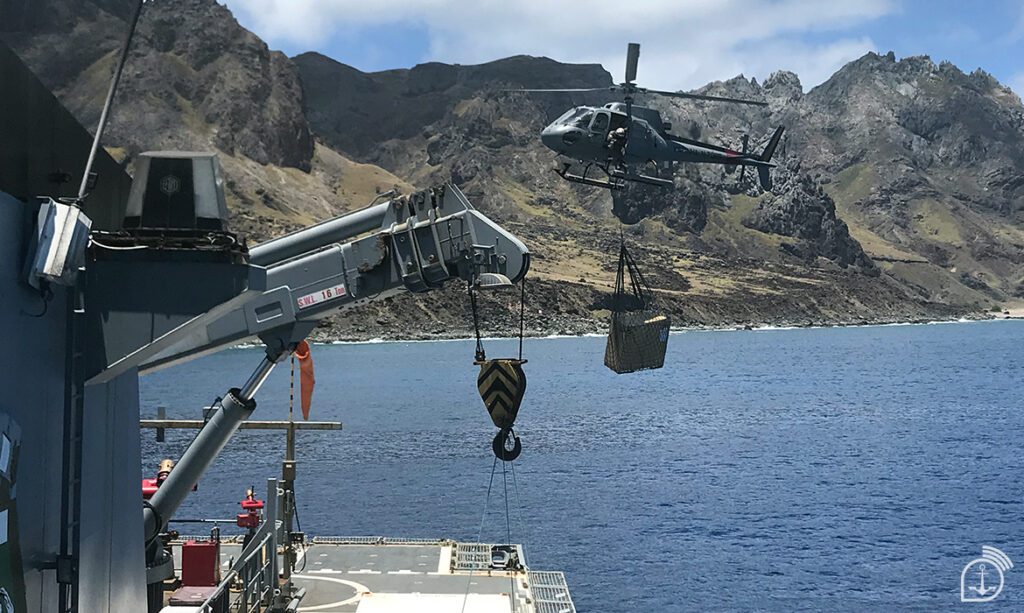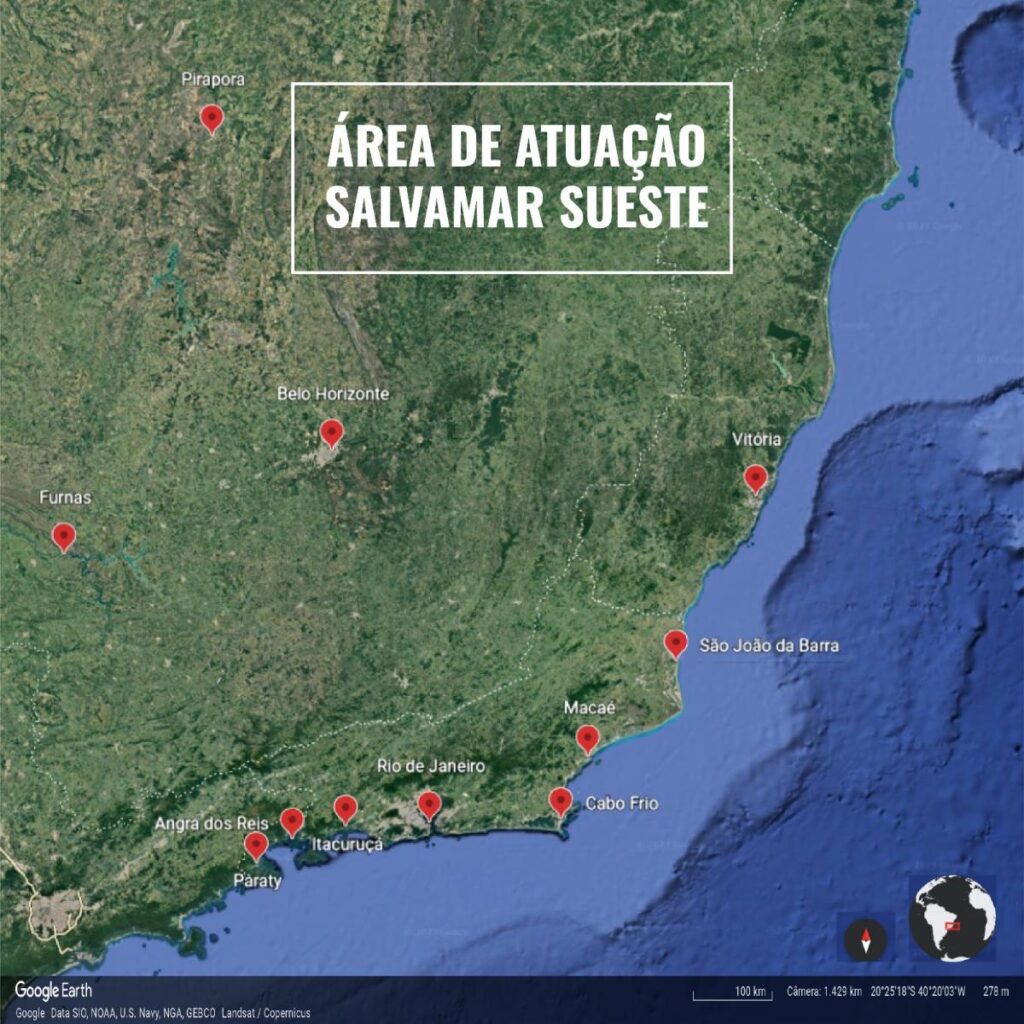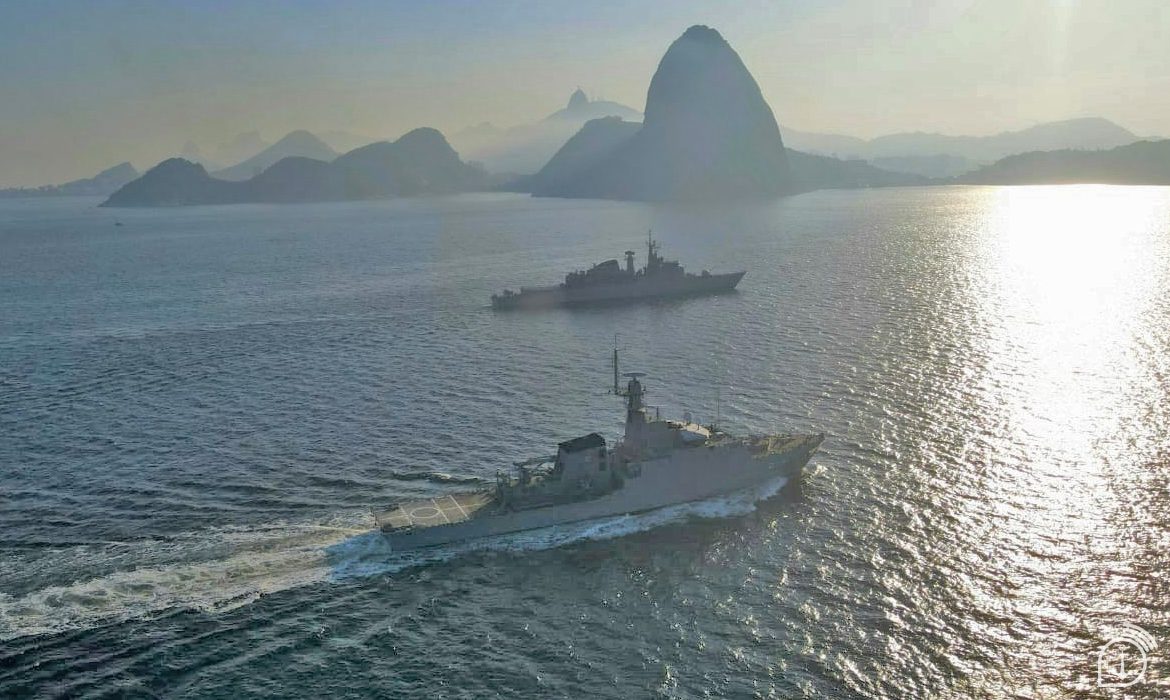Learn about the importance of this Command area, headquartered in Rio de Janeiro, where the largest number of Military Organizations, naval resources and Navy personnel are located
By First-Lieutenant (T) Ohana Gonçalves dos Reis Martinho, First-Lieutenant (RM2-T)
Luiz Guilherme Costa and Marine Guard (RM2-T) Caio Cézar Gomes Zóia – Rio de Janeiro, RJ
(The Brazilian Navy is present throughout the Brazilian territory, but in order for naval administration to be more efficient, the institution divided the country into nine administrative regions, called Naval Districts. The Marine News Agency will publish, starting this month, a special series on the Naval Districts. Get to know the particularities of the Navy in each region of Brazil).
With the conception of Porto Maravilha (Marvelous Port), in the port area of Rio de Janeiro, the local buildings were revitalized, attracting cariocas and tourists. Among mirrored façades and modern designs that defy engineering itself, one sees preserved architecture from colonial times: the headquarters of the 1st Naval District Command (Com1ºDN), built between 1750 and 1754. Those who pass by the structure may not be aware of its importance. But it is there that decisions are made that impact the defense of the Homeland; that represent the Maritime Authority in the states of Rio de Janeiro, Espírito Santo, and Minas Gerais; and that provide support to the Brazilian Fleet.
The Com1ºDN once accommodated the Navy Arsenal, where battleships and monitors were built, such as the “Humaitá”, which forced and defeated fortified passages in the Paraguayan War. With the changes of course (the Arsenal was transferred to Ilha das Cobras, in Rio de Janeiro), today, the 1st Naval District is responsible for an area of over 612 thousand square kilometers (km) (equivalent to 7.18% of the country’s territorial extension), adding the territories of its three Member States under jurisdiction, plus the islands of Trindade and Martin Vaz.
“Over the years, the 1st Command and its subordinate military organizations have worked hard and meticulously to keep their crews qualified and trained to fulfill the tasks assigned to them, by implementing theoretical and practical exercises, both within and outside the Navy, and by improving norms, procedures, and excellence in the management of budgetary resources. In this sense, we also seek to maintain and improve the material conditions of the facilities for support and of the land establishments and operational means, whenever possible following the technological development within our reach, in order to better meet the growing needs that lie ahead,” emphasized the Chief of Staff of the 1st Naval District Command, Rear Admiral Pedro Augusto Bittencourt Heine Filho.
OperationsThe District prepares and employs ships, aircraft and Marines – a land force of prompt and quick action, able to act in different strategic scenarios of interest – contributing to the defense of the Homeland, of the constitutional powers and the fulfillment of activities provided by law. The District also makes material and personnel resources available to cooperate with federal agencies in the repression of crimes at sea, in inland waters and in port areas, and of cross-border and environmental crimes. The collaboration occurs through logistical support, intelligence, communications, instruction, and power of presence.
The 1st Command has the Rio de Janeiro Marine Group, a land force combat unit, which expands the scope and possibilities of its action, contributing to the Navy’s security, through guarding and protecting the Force’s facilities and, when necessary, civilian facilities; guaranteeing law and order, by order; and other tasks compatible with its organization, personnel and operational capacity.
It also has the Southeastern Naval Patrol Group Command, which employs its nine vessels, among Ocean Patrol Vessels (NPaOc), Ocean Support Vessels (NApOc), Patrol Vessels (Npa), and Patrol Notices (AviPa), in the control of the maritime area, in patrol, in the enforcement of laws in Brazilian Jurisdictional Waters, and for the safeguard of human life at sea. It is important to highlight the fundamental role played by the Navy’s two radiogoniometric stations – on Ilha do Governador and in Cabo Frio, both in Rio de Janeiro – that monitor, intercept and analyze radio communication traffic and carry out radiolocation, for the activities carried out by the naval and intelligence resources.
Operational Force at sea and on land
- In addition to the internal actions assigned to the Force, in 2018, the Com1ºDN acted in the federal intervention, in the public security of Rio de Janeiro, collaborating to the reduction of crime rates, the increase of the perception of security in society and, thus, the guarantee of a safe and stable environment. Already in 2019, it worked on the removal of oil residues, which appeared on the coast of Paraíba and reached the coasts of Espírito Santo and Rio de Janeiro.
- In 2022, the NPaOc “Apa” intercepted a tugboat, 400 km off the coast of Rio de Janeiro, in which a large quantity of drugs was found. In 2021, the same ship transported a cylinder, capable of storing 90,000 m³ of liquid oxygen, from São Paulo to Manaus (AM), to ease the collapse of the health system in the capital of the state of Amazonas, caused by the Covid-19 pandemic. “We were at home at night when our cell phones rang. We had to go back to the ship immediately (…) we gathered where the cylinder would be and prayed. At this moment we understood the gravity of the situation. Every minute that passed was a life that needed oxygen to survive,” said the Master of the “Apa”, Sub-Officer Vinicius José Silva da Paz.
- Also in the scenario of fighting the coronavirus, the 1st Naval District opened, between 2020 and 2022, three vaccination and testing stations; supported the making of low-cost respirators and face masks and protectors; and decontaminated facilities of public interest. In the social field, it promoted campaigns for food and blood donations.
- In 2022, the Ocean Patrol Vessel “Amazonas” participated in the exercise “Obangame Express” with the purpose of training the African countries of the west and central coast to strengthen maritime security in the Gulf of Guinea, through simulation exercises of combat against illegal fishing, pollution at sea, piracy, terrorism, and search and rescue.
- In 2020, the “Apa” participated in Operation “Grand African Nemo”, similar to the “Obangame”, increasing interoperability among Navies and strengthening the South Atlantic Peace and Cooperation Zone, in order to consolidate Brazil as a relevant and influential regional actor in our strategic environment.

Oceanographic Post of Trindade Island (POIT) is an isolated detachment of the 1st Naval District, located about 600 nautical miles (1,167 km) from Vitória (ES), in the Atlantic Ocean, in the Vitória-Trindade Chain, formed by old extinct submarine volcanoes. The island, due to its strategic location, is permanently occupied by a military detachment of the Navy. This occupation ensures the maintenance of national sovereignty in that territory and allows an important strip of maritime area to be added to our Blue Amazon, guaranteeing Brazil’s right to the respective Exclusive Economic Zone (EEZ).
In 2011, the MB inaugurated a scientific station on the island, under the coordination of the Scientific Research Program on Trindade Island (ProTrindade), of the Secretariat of the Interministerial Commission for the Resources of the Sea (SECIRM) to manage the development of research in Trindade, the Martim Vaz Archipelago and adjacent maritime areas, in order to obtain scientific knowledge about the ecosystem of the region and preserve the characteristics of the sites.
The Commander of the 1st Naval District, Vice-Admiral Eduardo Machado Vazquez, explained how the logistical support to POIT works and why the Force is on the island.
“Bimonthly trips are made for the exchange of crew members and researchers, the provisioning of food and supplies, and equipment maintenance. On the sovereignty side, the maintenance of a permanent presence of an MB military detachment in the POIT guarantees the right of future generations of Brazilians to explore the potential riches of the respective Exclusive Economic Zone, of our Blue Amazon, on the spot.
In addition to its presence in the region, the military detachment carries out surveillance of the island, and collects meteorological and oceanographic data.
Safety on the rivers and seas

The four Port Captaincies (Rio de Janeiro, Macaé, Espírito Santo, and Minas Gerais), with their delegations and agencies, are responsible for the daily inspection and regulation of the waterway traffic in the inland waters and on the coast of the three states (RJ, ES, and MG), for the safety of navigation, the protection of human life at sea, and the prevention of environmental pollution caused by vessels.
This year, the Port Authority of Rio de Janeiro continued the mapping of abandoned boats and hulls in the Guanabara Bay, near Niterói (RJ), for the legal and sustainable destination of these materials, through the forfeiture process (loss in favor of the State, after a sentence of seizure of an asset) and, later, auction.
The Macaé Port Authority (CPM) followed the performance of foreign Commanders in the simulation of maneuvering of high-power offshore vessels, which act as tugboats, handling anchors and transporting supplies in the Numerical Test Tank, of the University of São Paulo, which is able to represent the real conditions found in a given port. The training is a CPM requirement so that the vessels, commanded by foreign seafarers and on an exceptional basis, can dock at the Imbetiba Port Terminal in Macaé (RJ).
The Port Authority of Espírito Santo mobilized tourists and boat drivers in the cities of Aracruz and Guarapari, with the educational campaign “Safe crossing” and started the use of drones to assist the naval inspection activities. The Fluvial Captaincy of Minas Gerais carried out naval inspection activities in the Araguari River, dam of the Capim Branco II Hydroelectric Power Plant, to check if the presence of floating structures interfered with the safety of waterway traffic in the region. On the occasion, 102 irregular structures were identified and notified, without prior consultation with the Maritime Authority.
Major public events
The 1st Command had participation in major events in the last decade, with emphasis on the Military World Games 2011, Rio +20, World Youth Day, Confederations Cup, World Cup “FIFA 2014”, Olympics and Paralympics “RIO 2016”. The year 2022 was a great milestone, due to the 200 years of Brazil’s Independence and the Brazilian Squadron, and the 1st District also actively participated in the celebrations.
Also last year, the Velas Latinoamérica 2022 took place. The event, which received about 10 thousand visitors in the port area of Rio de Janeiro, included public contemplation of the sailboats, cultural presentations, commented flag ceremonies, and visits from various international authorities, all with the aim of promoting professional and cultural exchange among Latin American Navies.
Services to society
The 1st Command, through Salvamar Sueste, performs Search and Rescue (SAR) activities, at sea and inland, using naval resources from its captainships, delegations and agencies, from the Southeast Naval Patrol Group Command and naval and naval aircraft resources from the Fleet, in its area of jurisdiction. The teams monitor and provide assistance 24 hours a day, helping human lives and vessels that have been damaged or involved in accidents. To do so, it has a structure for immediate response to distress calls, which can be made by phone 185, from anywhere in Brazil, including by people in distress in boats.
Salvamar Sueste has 11 rescue sub-centers, which monitor the control of maritime traffic of interest, through the Maritime Traffic Information System, the National Program for the Satellite Tracking of Fishing Vessels, and the Global Maritime Distress and Safety System.
In 2022, 19 SARs were registered, resulting in 85 people saved alive and 3 deaths. A recent case was an aeromedical evacuation of a young man with a heart attack on a ship, which was 100 nautical miles (185 km) from Vitória (ES). An aircraft from the 1st Antisubmarine Helicopter Squadron was activated by Salvamar Sueste and rescued the passenger.
Outside the operational area, the 1st Naval District offers other relevant services, such as military enlistment and recruitment, and, through the Marine Apprentice School of Espírito Santo (EAMES), it contributes to the Ministry of Defense’s Forces in Sports Program, which promotes sports activities, leisure, healthy meals, school tutoring, the development of professional skills, and civic-social actions for thousands of Brazilian children and adolescents.
Be part of our people
The Apprentice-Marineers School of Espírito Santo is one of the entry doors for those who wish to be a Navy Private. Every year, about 250 vacancies are available for the training course at EAMES. This year, enrollment can be made until February 12, on the site Ingresso na Marinha. The course is totally free of charge, it lasts eleven months and, during this period, the students receive an allowance of up to R$1,398.30, in addition to support for food, accommodation, and hospital assistance.
Source: Agência Marinha de Notícias
